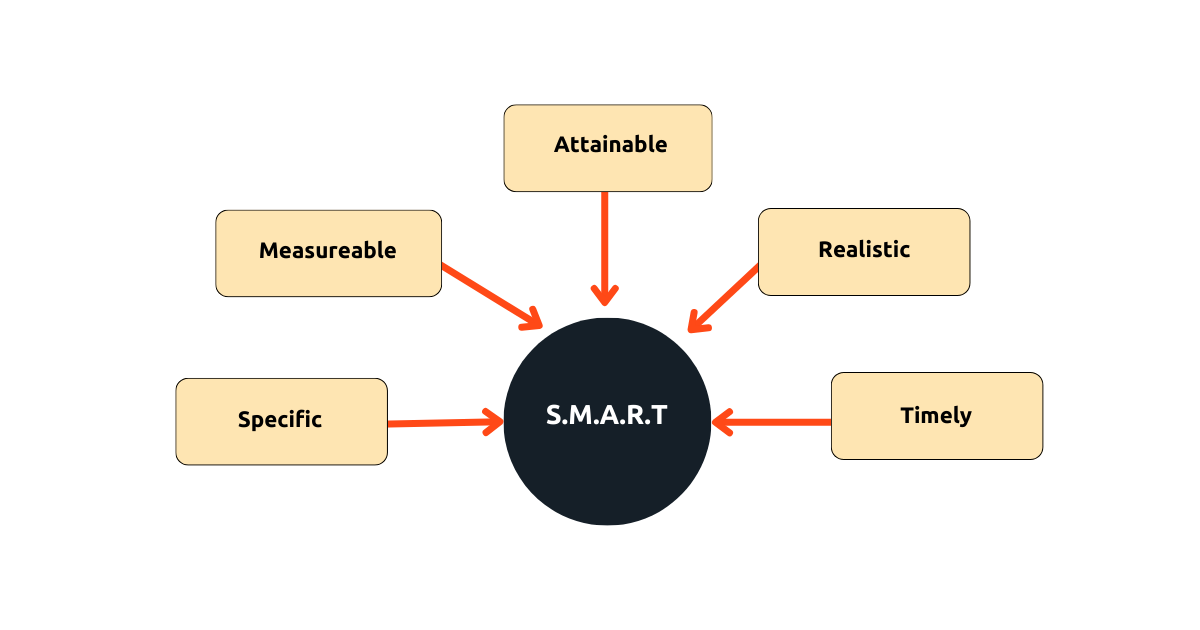Top 7 Essential Dos and Don’ts for Social Media Marketing in 2024
Are you leveraging the full potential of social media? Social media has become an important tool for businesses, offering exceptional opportunities to connect with their audience, establish brand presence, and foster meaningful engagement. However, the dynamic nature of social media platforms demands a strategic approach for success. In this article, we’ll explore the essential do’s and don’ts of social media marketing in 2024 to empower your strategy. Whether you’re a seasoned marketer or just starting out, understanding these key principles will help you navigate the social media landscape effectively.
So, are you ready to elevate your social media game and unlock the doors to success? Let’s dive into the crucial insights that will shape your social media marketing journey!
The Essential Dos and Don’ts for Social Media Marketing
Top 7 Dos for Social Media Marketing
1. Define Clear Objectives
Clear objectives are the backbone of successful social media marketing campaigns. They serve as the guiding principles that shape your strategies and efforts, ensuring a purposeful and effective online presence. The essential dos for social media marketing objectives include:

- Define Specific Goals: Clearly outline what you want to achieve through social media. Whether it’s increasing brand awareness, driving website traffic, or boosting sales, having specific and measurable goals provides a roadmap for success.
- Tailor Your Objectives for Your Target Audience: Tailor your objectives to align with the needs and preferences of your target audience. Knowing who you’re trying to reach ensures that your content and engagement efforts resonate with the right people.
- Establish Key Performance Indicators (KPIs): Identify metrics that align with your objectives and measure success. KPIs could include engagement rates, conversion rates, or click-through rates. Regularly monitor these indicators to measure the effectiveness of your social media efforts.
- Set Realistic and Achievable Targets: While ambition is admirable, it’s crucial to set goals that are achievable within a given timeframe. Realistic targets help maintain motivation and prevent frustration, allowing for steady progress.
- Align Objectives with the Marketing Strategy: Ensure that your social media objectives complement your broader marketing strategy. Consistent messaging and integration with other marketing channels enhance the overall impact and coherence of your brand.
- Create a Content Calendar: Develop a structured content plan that supports your objectives. A content calendar helps maintain consistency, ensures a varied and engaging mix of content, and aligns with your overarching social media goals.
- Monitor and Adapt: Regularly evaluate your performance against established objectives. Be prepared to adapt your strategies based on insights gained from analytics and evolving trends in the social media landscape.
By adhering to these essential dos, businesses can establish clear and effective social media marketing objectives that drive meaningful results and contribute to overall marketing success.
2. Know Your Audience
Understanding your audience is a fundamental aspect of successful social media marketing. The essential dos for knowing your audience in social media marketing include:

- Demographic Research: Conduct thorough demographic research to identify the age, gender, location, interests, and other key characteristics of your target audience. This foundational knowledge forms the basis for crafting content that resonates with your specific demographic.
- Social Media Analytics: Leverage social media analytics tools to gather insights into your audience’s behaviour. Monitor engagement metrics, such as likes, shares, and comments, to understand which content performs well and tailor your strategy accordingly.
- Audience Personas: Create detailed audience personas that represent your ideal customers. These personas should encompass not only demographic details but also the challenges, preferences, and motivations of your target audience. This helps in developing content that directly addresses their needs.
- Active Listening: Actively listen to your audience by monitoring conversations, comments, and mentions related to your brand or industry. This real-time feedback provides valuable insights into audience sentiments and allows for timely adjustments to your social media strategy.
- Feedback Mechanisms: Establish channels for direct communication with your audience. Encourage feedback through surveys, polls, or direct messaging. This two-way communication fosters a sense of community and helps you understand the evolving needs of your audience.
- Adapt to Platform Preferences: Different social media platforms attract distinct user demographics with unique preferences. Tailor your content and engagement strategies to align with the specific characteristics of each platform where your audience is present.
- Stay Updated on Trends: Be aware of current trends and cultural variations that resonate with your audience. Staying current allows you to incorporate relevant and timely content into your social media strategy, showcasing your brand’s awareness and relatability.
- Segmentation: Recognize that your audience is diverse, and not everyone may respond to the same content in the same way. Implement segmentation strategies to tailor messages to specific subgroups within your overall audience, ensuring a more personalized and targeted approach.
By diligently following these essential dos for understanding target audience, businesses can build stronger connections, deliver more relevant content, and foster a sense of community on social media, ultimately contributing to the success of their marketing efforts.
3. Create Quality Content
Creating quality content is a cornerstone of effective social media marketing. The essential dos for producing high-quality content in social media marketing include:

- Know Your Brand Voice: Define and maintain a consistent brand voice across all social media platforms. Whether it’s formal, casual, humorous, or informative, a cohesive brand voice helps build brand identity and recognition.
- Understand Platform Dynamics: Different social media platforms have unique characteristics and audience expectations. Tailor your content to match the specific features and user behaviours of each platform, optimizing its impact.
- Engaging Visuals: Incorporate visually appealing elements into your content. Images, videos, infographics, and other visual media capture attention more effectively than text alone, making your content more shareable and memorable.
- Compelling Headlines and Captions: Craft attention-grabbing headlines and captions. In the fast-scrolling world of social media, concise and compelling text is crucial for encouraging users to stop and engage with your content.
- Storytelling: Tell compelling stories that resonate with your audience. Whether it’s about your brand’s journey, customer testimonials, or behind-the-scenes glimpses, storytelling creates an emotional connection and enhances brand loyalty.
- Educational Content: Share valuable information that educates and informs your audience. Demonstrating expertise in your industry builds trust and positions your brand as a reliable source of information.
- Consistent Posting Schedule: Establish a consistent posting schedule to maintain a regular presence on social media. Consistency helps keep your audience engaged and aware of your brand, increasing the likelihood of interaction.
- Interactive Content: Encourage audience participation through polls, quizzes, surveys, and contests. Interactive content fosters engagement, and platforms often prioritize content that receives higher levels of interaction.
- Responsive to Trends: Stay current with trends and incorporate them into your content when relevant. This demonstrates your brand’s relevance and ability to connect with the evolving interests of your audience.
- Quality over Quantity: Prioritize quality over quantity when creating content. Well-thought-out, valuable content tends to perform better and leave a lasting impression on your audience.
By adhering to these essential dos for creating quality content, businesses can enhance their social media presence, foster engagement, and build a loyal online community. Quality content not only attracts attention but also contributes to the overall success of social media marketing efforts.
4. Consistent Branding
Consistent branding is a crucial element for success in social media marketing. The essential dos for maintaining consistent branding in your social media strategy include:

- Unified Visual Identity: Establish a cohesive visual identity across all social media platforms. This includes using consistent colours, fonts, and imagery in your profile pictures, cover photos, and post designs. A unified visual identity helps with instant brand recognition.
- Brand Messaging Consistency: Ensure that your brand messaging remains consistent across different social media channels. From your bio to your captions, maintain a coherent voice that reflects your brand values, personality, and key messages.
- Logo Usage: Use your logo consistently and appropriately across all platforms. The logo is a fundamental element of brand recognition, and its consistent use reinforces your brand’s identity in the minds of your audience.
- Tone and Style Guidelines: Develop clear guidelines for the tone and style of your content. Whether your brand voice is formal, friendly, or humorous, maintaining a consistent tone helps you build a distinct and recognizable brand personality.
- Cross-Platform Consistency: Adapt your branding strategy to fit the unique features of each social media platform while maintaining a consistent overall theme. Consistency should prevail in the way your brand is presented, even as you tailor content for specific platforms.
- Branded Hashtags: Create and use branded hashtags consistently. This not only helps you organize and track user-generated content but also promotes brand recognition when customers and followers use your hashtags in their posts.
- Bio and About Sections: Optimize your bio and “about” sections on each platform to concisely communicate your brand’s identity, values, and offerings. These sections serve as a quick reference for visitors to understand who you are and what you stand for.
- Consistent Posting Schedule: Establish a regular posting schedule to maintain a constant presence on social media. Consistency in posting reinforces your brand’s commitment to engaging with the audience and helps you build trust over time.
- Adherence to Brand Guidelines: Develop and adhere to comprehensive brand guidelines. These guidelines should encompass visual elements, messaging, and other brand-related rules to ensure uniformity in how your brand is presented online.
- Monitor and Adjust: Regularly monitor your social media channels for any deviations from your established brand guidelines. Address inconsistencies promptly and be adaptable to changes in your brand strategy as needed.
By incorporating these essential dos for consistent branding, businesses can reinforce their brand identity, foster brand loyalty, and create a cohesive online presence that resonates with their target audience across various social media platforms.
5. Engage and Interact
Engaging and interacting with your audience is vital for a successful social media marketing strategy. The essential dos for effective engagement and interaction in social media marketing include:

- Prompt Responses: Respond to comments, messages, and mentions promptly. Timely interactions show your audience that you value their input and are actively engaged with them.
- Two-Way Communication: Foster two-way communication by actively participating in conversations. Encourage dialogue by asking questions, seeking feedback, and responding to comments. This builds a sense of community around your brand.
- Personalized Interactions: Personalize your interactions to make them more meaningful. Use the names of individuals when responding, acknowledge their specific comments, and tailor your responses to address their concerns or questions.
- Social Listening: Practice social listening by monitoring conversations about your brand, industry, or relevant keywords. Understanding what your audience is saying enables you to respond effectively and adapt your content strategy accordingly.
- Engage with User-Generated Content: Acknowledge and share user-generated content (UGC) to showcase customer loyalty and build a sense of community. This not only strengthens your relationship with existing customers but also encourages others to engage with your brand.
- Run Contests and Giveaways: Organize contests, giveaways, or challenges to stimulate audience participation. This not only boosts engagement but also encourages users to share your content with their networks, expanding your reach.
- Live Video and Q&A Sessions: Leverage live video features for Q&A sessions or behind-the-scenes glimpses. Live interactions create a real-time connection with your audience, fostering authenticity and transparency.
- Show Appreciation: Express gratitude for positive feedback, shares, and mentions. Demonstrating appreciation reinforces a positive relationship with your audience and encourages continued engagement.
- Consistent Brand Voice: Maintain a consistent brand voice in your interactions. Whether responding to praise or addressing concerns, ensure that your responses align with your brand’s personality and values.
- Monitor Analytics: Use analytics tools to track engagement metrics and gain insights into the types of content that resonate most with your audience. Analyzing this data helps refine your strategy for better engagement over time.
By prioritizing these essential dos for engagement and interaction, businesses can cultivate a loyal online community, enhance brand visibility, and create a positive perception of their brand on social media platforms. Active engagement is not just about broadcasting messages but fostering meaningful connections with your audience.
6. Optimize Posting Schedule
Optimizing your posting schedule is a critical element of a successful social media marketing strategy. The essential dos for effectively managing your posting schedule include:

- Understand Your Audience’s Behavior: Analyze your audience’s behavior to determine the most active times on social media. Consider factors such as time zone differences and the specific habits of your target demographic to maximize the impact of your posts.
- Use Analytics Tools: Leverage social media analytics tools to track when your audience is most engaged. These tools provide insights into peak activity periods, helping you schedule posts when your followers are most likely to see and interact with your content.
- Platform-Specific Strategies: Different social media platforms have distinct peak usage times. Tailor your posting schedule to the specific characteristics of each platform, considering factors such as user demographics and platform algorithms.
- Consistency is Key: Establish a consistent posting schedule to maintain a steady presence on social media. Consistency builds brand awareness and helps your audience anticipate and look forward to your content.
- Experiment with Timing: Conduct experiments to identify the optimal posting times for your audience. Test different posting schedules and analyze the performance metrics to refine your strategy over time.
- Consider Content Type: Different types of content may perform better at specific times. For example, visual content might be more engaging during leisure hours, while informative posts may gain traction during business hours. Tailor your posting schedule accordingly.
- Utilize Scheduling Tools: Take advantage of social media scheduling tools to plan and automate your posts. These tools allow you to maintain a consistent presence without the need for constant manual posting.
- Be Mindful of Time Zones: If your audience is spread across various time zones, consider scheduling posts at times that cater to different regions. This ensures that your content reaches a global audience without favoring one time zone over another.
- Monitor and Adjust: Regularly monitor the performance of your posts and adjust your schedule based on the insights gained. Social media trends and audience behavior may change, requiring you to adapt your posting strategy accordingly.
- Holiday and Event Planning: Plan your posting schedule around holidays and relevant events. Aligning your content with specific occasions can boost engagement and tap into trending conversations.
By adhering to these essential dos for optimizing your posting schedule, businesses can enhance the visibility and effectiveness of their social media marketing efforts. Understanding when and how to reach your audience maximizes the impact of your content, drives better engagement, and ultimately contributes to the success of your overall social media strategy.
7. Utilize Analytics
Utilizing analytics is a fundamental aspect of an effective social media marketing strategy. The essential dos for leveraging analytics in your social media efforts include:

- Set Clear Goals and Objectives: Before diving into analytics, establish clear goals and objectives for your social media marketing. This could include increasing brand awareness, driving website traffic, or boosting engagement. Having defined goals provides a framework for what to measure.
- Choose Relevant Metrics: Identify and focus on key performance indicators (KPIs) that align with your goals. Metrics such as engagement rates, click-through rates, conversion rates, and follower growth can provide valuable insights into the success of your social media campaigns.
- Use Platform Analytics Tools: Each social media platform offers its own set of analytics tools. Familiarize yourself with these tools to access platform-specific insights. These tools often provide data on audience demographics, post reach, and engagement, allowing for targeted adjustments to your strategy.
- Regularly Review Data: Consistently review your analytics data to track the performance of your social media efforts. Regular monitoring allows you to identify trends, measure the effectiveness of campaigns, and make data-driven decisions for ongoing optimization.
- A/B Testing: Conduct A/B testing by creating variations of your content and comparing their performance. This allows you to understand what resonates best with your audience and refine your content strategy accordingly.
- Track Conversions: If your social media goals include driving conversions, use analytics to track the customer journey from social media engagement to conversion. Understanding how social media contributes to your business objectives is crucial for measuring its overall impact.
- Audience Insights: Utilize analytics to gain insights into your audience’s behaviour and preferences. This information helps you tailor your content to better resonate with your target demographic, leading to improved engagement.
- Competitor Analysis: Compare your social media performance with that of your competitors. Analyzing their strategies and success can provide valuable benchmarks and inspiration for enhancing your own social media presence.
- Adapt Strategies Based on Insights: Be willing to adapt your social media strategies based on the insights gained from analytics. If certain content types or posting times consistently perform better, adjust your approach to capitalize on what works best for your audience.
- Invest in Advanced Analytics Tools: Consider using advanced analytics tools to gain deeper insights and more sophisticated data analysis. These tools can provide a holistic view of your social media performance, helping you make informed decisions for strategic improvements.
By incorporating these essential dos for utilizing analytics, businesses can refine their social media strategies, maximize the impact of their campaigns, and continuously optimize their online presence to achieve better results. Analytics serve as a valuable compass, guiding marketers towards more effective and efficient social media marketing practices.
Top 7 Don’ts for Social Media Marketing
1. Over-Promotion
Over-promoting is a critical “don’t” in social media marketing, as it can lead to audience disengagement and a negative perception of your brand. The essential don’ts for avoiding over-promotion in social media marketing include:

- Balance Content Types: Avoid an excessive focus on promotional content. Strive for a balanced mix of content types, including informative, entertaining, and engaging posts. Over-promoting products or services can make your feed appear one-dimensional and may turn off your audience.
- Frequency Matters: Be mindful of the frequency of promotional posts. Posting too often about your products or services can overwhelm your audience and dilute the impact of your messaging. Aim for a varied content calendar to maintain interest.
- Value Over Sales Pitch: Prioritize providing value to your audience over constant sales pitches. Share content that educates, entertains, or solves problems for your followers. Building a relationship based on value creates a more positive and receptive audience.
- Avoid Repetition: Steer clear of repetitive promotional messages. Recycling the same sales pitch in multiple posts can come across as monotonous and may lead to audience fatigue. Keep your content fresh and varied to maintain interest.
- Context Matters: Consider the context of your posts. While promotional content is essential, ensure it aligns with the overall theme of your feed and is presented in a way that feels natural and relevant to your audience.
- Engage Beyond Promotions: Don’t limit your engagement to promotional posts. Actively participate in conversations, respond to comments, and share user-generated content. Engaging beyond promotions helps in building a genuine connection with your audience.
- Authenticity is Key: Avoid overly scripted or salesy language. Strive for authenticity in your messaging. Authentic content resonates better with audiences and fosters trust in your brand.
- Monitor Audience Feedback: Pay attention to audience feedback and reactions. If you notice a decline in engagement or an increase in negative comments, it may be a sign of over-promotion. Use feedback to adjust your strategy and strike a better balance.
- Utilize Storytelling: Instead of straightforward promotions, incorporate storytelling techniques to convey your brand message. Narratives are often more compelling and emotionally engaging, making your content more shareable and memorable.
- Diversify Content Goals: Expand your content goals beyond immediate sales. Social media is also about brand building, community engagement, and establishing your brand as an authority in your industry. Don’t solely focus on the transactional aspect.
By avoiding over-promotion and adopting a more balanced and value-driven approach to social media marketing, businesses can build stronger relationships with their audience, foster engagement, and establish a positive brand image that extends beyond mere sales pitches.
2. Ignore Negative Feedback
Ignoring negative feedback is a significant “don’t” in social media marketing, as it can harm your brand reputation and hinder your ability to build trust with your audience. The essential don’ts for handling negative feedback in social media marketing include:

- Respond Timely and Professionally: Avoid ignoring negative comments or reviews. Respond promptly and professionally, addressing the concerns raised by the user. Ignoring negative feedback can give the impression that your brand is indifferent or unresponsive.
- Acknowledge the Issue: Don’t dismiss or downplay the concerns expressed by the user. Acknowledge the problem and express empathy. Demonstrating understanding shows that you value customer feedback and are committed to resolving issues.
- Take Conversations Offline: Avoid engaging in lengthy public discussions about customer complaints. Encourage the user to continue the conversation privately through direct messages or email. This helps maintain a professional image and prevents further escalation in a public forum.
- Avoid Deleting Negative Comments: Deleting negative comments may be tempting, but it’s generally not recommended. Doing so can be perceived as censorship and may exacerbate the issue. Instead, address the concerns openly and transparently.
- Provide Solutions: Don’t just acknowledge the problem—offer practical solutions. Whether it’s a refund, replacement, or further assistance, demonstrating your commitment to resolving issues positively impacts your brand’s reputation.
- Learn from Feedback: Negative feedback often holds valuable insights. Avoid disregarding it; instead, use it as an opportunity to learn and improve. Analyze recurring issues and consider implementing changes to address underlying problems.
- Maintain a Positive Tone: Even in the face of criticism, maintain a positive and constructive tone in your responses. Avoid becoming defensive or confrontational, as this can escalate the situation and create a negative perception of your brand.
- Apologize Sincerely: If your brand has made a mistake, don’t shy away from offering a sincere apology. Taking responsibility for errors and demonstrating a commitment to making amends can positively influence how your brand is perceived.
- Educate and Communicate Changes: If negative feedback highlights areas for improvement, use it as an opportunity to communicate changes or updates. Sharing information about how you’re addressing concerns showcases transparency and a dedication to continuous improvement.
- Monitor and Learn: Don’t treat negative feedback as isolated incidents. Continuously monitor feedback trends and use them as a source of valuable information for refining your products, services, and customer interactions.
By actively addressing and learning from negative feedback, businesses can turn challenging situations into opportunities for improvement and showcase a commitment to customer satisfaction. Ignoring negative comments, on the other hand, can lead to reputational damage and erode customer trust over time.
3. Inconsistent Posting
Inconsistent posting is a significant “don’t” in social media marketing, as it can undermine your brand’s visibility, engagement, and overall effectiveness on social platforms. The essential don’ts for avoiding inconsistent posting in social media marketing include:

- Maintain a Regular Schedule: Avoid irregular posting patterns that can confuse or disengage your audience. Consistency is key in social media, so establish a regular posting schedule that aligns with the behaviour and expectations of your target audience.
- Plan Content in Advance: Don’t rely solely on spontaneous posting. Plan your content in advance to ensure a steady stream of posts. This helps maintain a cohesive and strategic approach to your social media marketing efforts.
- Utilize Scheduling Tools: Resist the temptation to post everything manually each day. Instead, leverage scheduling tools to plan and automate your posts. This ensures a consistent flow of content, even during busy periods or unexpected events.
- Align with Business Goals: Inconsistent posting can lead to a lack of alignment with your overall business goals. Don’t treat social media as an afterthought; integrate it into your broader marketing strategy and maintain a posting schedule that supports your objectives.
- Avoid Lengthy Gaps: Don’t allow extended periods of silence on your social media channels. Lengthy gaps between posts can result in decreased visibility and reduced engagement. Keep your audience interested and active by consistently providing valuable content.
- Diversify Content Types: Inconsistency in content types may lead to a monotonous feed. Avoid sharing similar content repeatedly; instead, diversify your posts with a mix of images, videos, infographics, and other engaging formats to keep your audience interested.
- Remain Platform-Specific: Different social media platforms have unique user behaviors and optimal posting frequencies. Don’t adopt a one-size-fits-all approach; tailor your posting schedule to each platform to maximize visibility and engagement.
- Monitor Analytics: Ignoring analytics is a common mistake. Regularly monitor performance metrics to understand when your audience is most active and which types of content resonate best. Use these insights to refine your posting schedule for better results.
- Avoid Inconsistent Messaging: Ensure that your messaging is consistent across posts. Don’t convey conflicting information or change your brand voice abruptly. Consistent messaging builds brand identity and fosters trust with your audience.
- Be Mindful of Time Zones: If your target audience spans different time zones, consider this in your posting schedule. Don’t overlook the potential impact of time zone differences on when your audience is most active; schedule posts accordingly to reach a broader demographic.
By avoiding inconsistent posting and maintaining a well-planned, strategic approach to social media marketing, businesses can enhance their online presence, keep their audience engaged, and achieve more consistent and predictable results over time.
4. Overuse Hashtags
Overusing hashtags is a crucial “don’t” in social media marketing, as it can diminish the effectiveness of your content and potentially alienate your audience. The essential don’ts for avoiding the overuse of hashtags in social media marketing include:

- Quality Over Quantity: Resist the temptation to include an excessive number of hashtags in your posts. Instead, focus on quality by choosing relevant and meaningful hashtags that truly reflect the content and resonate with your target audience.
- Avoid Spammy Hashtags: Overloading your posts with irrelevant or overly generic hashtags may be perceived as spammy. Avoid using hashtags solely for the sake of visibility; opt for those genuinely related to your content and industry.
- Consider Platform Norms: Different social media platforms have varying norms and etiquette regarding the use of hashtags. Don’t apply the same hashtag strategy across all platforms; adapt your approach based on each platform’s guidelines and user behaviour.
- Relevance Matters: Ensure that the hashtags you use are directly relevant to the content of your post. Don’t include hashtags that are unrelated or misleading, as this can lead to disengagement and negatively impact your credibility.
- Limit the Total Count: While some platforms allow a higher number of hashtags, it’s essential to set limits. Don’t overwhelm your audience with an excessive number of hashtags; instead, focus on a concise selection that adds value to your content.
- Incorporate Branded Hashtags Thoughtfully: If using branded hashtags, do so thoughtfully and sparingly. Don’t flood your posts with too many branded hashtags; incorporate them strategically to encourage user participation and brand recognition.
- Mindful Placement: Avoid placing hashtags in the main body of your post if it disrupts readability or appears forced. Instead, consider incorporating hashtags at the end of your post or within the comments to maintain a clean and aesthetically pleasing presentation.
- Research Popular and Niche Hashtags: Striking a balance between popular and niche hashtags is essential. Don’t exclusively use highly competitive hashtags; also incorporate specific and less saturated hashtags to reach a more targeted audience.
- Monitor Trend Relevance: Trending hashtags can boost visibility, but their relevance is fleeting. Don’t use trending hashtags if they do not align with your content or brand, as it may come across as opportunistic and insincere.
- Regularly Review Hashtag Performance: Don’t set and forget your hashtag strategy. Regularly review the performance of the hashtags you use and adjust your approach based on engagement metrics. This allows you to refine your strategy for optimal results.
By avoiding the overuse of hashtags and adopting a strategic and thoughtful approach, businesses can enhance the discoverability of their content and engage with a more targeted audience. Quality, relevance, and mindful hashtag usage contribute to a more effective and authentic social media marketing presence.
5. Ignore Emerging Trends
Ignoring emerging trends is a significant “don’t” in social media marketing, as it can lead to missed opportunities, decreased relevance, and a stagnant online presence. The essential don’ts for social media marketing regarding emerging trends include:

- Stay Current: Avoid the mistake of neglecting emerging trends in the dynamic landscape of social media. Failing to stay current can result in your content becoming outdated, making it challenging to capture the attention of your target audience.
- Monitor Industry Changes: Don’t disregard shifts and developments within your industry. Stay vigilant about emerging trends, technologies, and consumer behaviors that may impact your business. Adapting to these changes can give you a competitive edge in the social media space.
- Participate in Conversations: Ignoring ongoing conversations and trends within your niche can isolate your brand. Actively participate in relevant discussions, engage with trending topics, and contribute valuable insights to showcase your brand’s awareness and expertise.
- Embrace New Content Formats: Resist the urge to stick to familiar content formats. Social media platforms often introduce new features and formats; don’t shy away from experimenting with them. Embracing video content, live streaming, and interactive features can help keep your content fresh and engaging.
- Adapt to Algorithm Changes: Social media algorithms frequently evolve to enhance user experience. Don’t ignore these changes; instead, adapt your content strategy to align with algorithmic preferences. This ensures that your content remains visible to your audience.
- Explore New Platforms: New social media platforms continually emerge, each with its unique audience and features. Don’t dismiss these platforms without exploration. Assess their relevance to your target demographic and consider incorporating them into your marketing strategy if they align with your goals.
- Closely Follow Consumer Behavior: Neglecting shifts in consumer behavior can lead to disconnected marketing efforts. Regularly analyze your audience’s behavior on social media, paying attention to changes in preferences, usage patterns, and content consumption habits.
- Utilize Influencer Marketing: Overlooking the power of influencer marketing is a common mistake. Influencers often play a significant role in shaping trends and influencing consumer opinions. Don’t ignore the potential of collaborating with influencers who align with your brand values.
- Adaptive Content Strategies: A rigid content strategy that ignores emerging trends can become stale. Avoid this by incorporating adaptive content strategies that allow your brand to capitalize on new trends and maintain relevance with your audience.
- Evaluate Data and Analytics: Ignoring data and analytics is a missed opportunity for optimization. Regularly evaluate performance metrics to identify trends in audience engagement, content effectiveness, and overall social media impact. Use these insights to refine your strategy.
By actively avoiding the neglect of emerging trends, businesses can position themselves to seize new opportunities, remain relevant in their industries, and maintain a dynamic and engaging social media presence that resonates with their target audience.
6. Automate Without Personalization
Automating social media marketing without incorporating personalization is a crucial “don’t” that can undermine the effectiveness of your strategy. The essential don’ts for social media marketing automation without personalization include:

- Generic Automation: Avoid the pitfall of generic, one-size-fits-all automated content. Automation tools can streamline processes, but using them without personalization risks delivering content that lacks relevance and fails to resonate with your audience.
- Impersonal Messaging: Don’t rely solely on automated messages that lack a personal touch. Whether it’s responding to comments, direct messages, or scheduled posts, incorporating a human element and personalization helps in building genuine connections with your audience.
- Overly Scheduled Posts: Resisting the urge to over-schedule posts without considering real-time events or trends is essential. While automation can save time, it’s crucial to stay adaptable and responsive to current happenings to maintain a relevant and engaging social media presence.
- Neglecting Audience Segmentation: Ignoring the importance of audience segmentation in automated campaigns is a mistake. Tailoring content to specific segments of your audience based on demographics, behaviors, or preferences ensures that your messages resonate more effectively.
- Forgetting the Human Touch: Automated responses and messages should not completely replace human interaction. Avoid neglecting the human touch by periodically engaging directly with your audience, responding to individual comments, and participating in conversations authentically.
- Ignoring Real-Time Engagement: Automated posting tools are valuable, but don’t overlook the importance of real-time engagement. Monitor your social media channels actively, respond promptly to comments, and participate in trending conversations to demonstrate your brand’s responsiveness.
- Cookie-Cutter Content: Refrain from using a cookie-cutter approach to content creation and distribution. Each social media platform and audience segment may require a unique strategy. Customizing content for different platforms and audience preferences ensures a more personalized and effective approach.
- Failure to Adjust Strategy: Social media trends and algorithms evolve, and automated strategies need to adapt accordingly. Don’t set and forget your automated processes; regularly assess performance metrics and adjust your strategy to align with emerging trends and shifts in audience behavior.
- Automated Direct Messages (DMs): Using automated direct messages without personalization can be off-putting to users. Instead of generic automated DMs, consider sending personalized messages based on user interactions or specific triggers to enhance the user experience.
- Impersonalized User-Generated Content (UGC): If incorporating user-generated content into your strategy, avoid using it in an impersonalized manner. Acknowledge and thank users individually for their contributions, creating a sense of community and appreciation.
By steering clear of social media marketing automation without personalization, businesses can foster stronger connections with their audience, increase engagement, and maintain a more authentic and humanized brand presence on social platforms.
Personalization remains a crucial element in ensuring that automated processes enhance rather than detract from the overall user experience.
7. Neglect Platform-Specific Features
Neglecting platform-specific features is a significant “don’t” in social media marketing that can hinder your ability to maximize the effectiveness of your campaigns. The essential don’ts for social media marketing regarding platform-specific features include:

- One-Size-Fits-All Approach: Avoid adopting a one-size-fits-all strategy across different social media platforms. Each platform has unique features, algorithms, and user behaviours. Neglecting these platform-specific nuances can result in suboptimal performance.
- Ignoring Algorithm Changes: Social media platforms regularly update their algorithms, affecting the visibility of content. Don’t disregard these changes; stay informed and adapt your content strategy to align with the latest algorithmic preferences for each platform.
- Neglecting Video Content: Video content is highly favoured on many social media platforms. Neglecting the use of video or underestimating its potential can limit your reach and engagement. Embrace platform-specific video features to enhance your content strategy.
- Avoiding Live Streaming: Live streaming is a dynamic and interactive way to engage with your audience. Don’t overlook or shy away from the live streaming features available on platforms like Facebook, Instagram, and Twitter. Live content can create a sense of immediacy and connection.
- Underutilizing Story Features: Many platforms offer story features that allow you to share temporary, engaging content. Neglecting or underutilizing these features can be a missed opportunity to connect with your audience in a more casual and real-time manner.
- Ignoring Polls and Interactive Elements: Neglecting interactive features, such as polls, quizzes, and interactive stickers, deprives your audience of engaging content experiences. Leverage these features to encourage participation and boost overall engagement.
- Failure to Optimize Ad Formats: If utilizing paid advertising, don’t use the same ad formats across all platforms without optimization. Each platform offers unique ad formats and targeting options; tailoring your ads to fit the strengths of each platform enhances their effectiveness.
- Not Adapting to Visual Trends: Visual trends often differ across platforms. Neglecting to adapt your visual content to fit the trends and preferences of each platform can make your content seem out of touch or less appealing to your target audience.
- Overlooking LinkedIn Features: If your target audience includes professionals and businesses, don’t overlook the features offered by LinkedIn. Neglecting LinkedIn’s unique capabilities, such as professional networking and B2B marketing tools, limits your ability to reach a specific demographic.
- Ignoring Platform Analytics: Each social media platform provides analytics tools to help you understand your audience and measure performance. Don’t ignore these analytics; regularly review platform-specific insights to make informed decisions and optimize your strategy.
By avoiding the neglect of platform-specific features, businesses can leverage the unique strengths of each social media platform to enhance their marketing efforts. Embracing the distinct characteristics and tools offered by each platform contributes to a more targeted, engaging, and effective social media strategy.
Conclusion
Mastering the art of social media marketing demands a strategic blend of creativity, consistency, and responsiveness. By adhering to these essential dos and avoiding the don’ts, businesses can confidently navigate the dynamic social media landscape. Through this, they not only build meaningful connections with their audience but also pave the way for long-term success in the ever-evolving digital realm.
What are the above dos and don’ts you need to follow to elevate your social media game? Mention them in the comments below!

